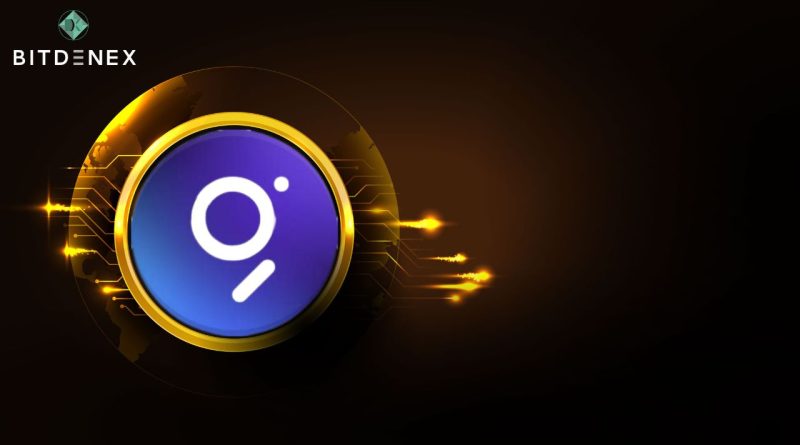What Is The Graph (GRT) Token?
GRT (Graph Reduction Protocol) was introduced in July 2018 with the vision of creating a decentralized indexing protocol for Web3. The protocol forms the core of Web3, which delivers consumer-grade performance and decentralized applications.
The Graph: Indexing Protocol for Seamless Data Exchange
The Graph is an indexing protocol used to query networks such as Ethereum (ETH) and the Interplanetary File System (IFS) (IPFS). Anyone can create or publish open APIs known as subgraphs, which make data easily accessible.
We have successfully integrated The Graph with Chainlink (LINK), the industry’s leading decentralized oracle network. The integration enables indexed data from The Graph’s APIs, known as subgraphs, to be sent to smart contracts via Chainlink oracles. As a result, developers have opportunities to use indexed data sets to create powerful, genuinely decentralized applications.
On the other hand, indexing is a method of structuring and categorizing data so that users can easily search for and query it. Another critical feature is the availability of The Graph-indexed data to smart contracts via secure and dependable oracles. Chainlink is a framework for creating decentralized oracle networks, which are required for data sharing between decentralized applications.
Development and Growth of The Graph
The Graph (GRT) token is worth noting because it has grown and expanded its community significantly since its introduction in July 2018.
Yaniv Tal (project lead), Brandon Ramirez (research lead), and Jannis Pohlmann (tech lead) founded the company, and since then a team of other professionals has joined. There are experts from the Ethereum Foundation, OpenZeppelin, Decentraland, Orchid, and MuleSoft, among others resulted in the company’s IPO and acquisition by Salesforce, Puppet, Red Hat, and Barclays.
The Graph raised funds for network development from community members, strategic VCs, and influential individuals in the blockchain community.
The Graph’s Tech Specs
Subgraphs are The Graph’s first feature. They define how blockchain data apps and dApp developers will consume them. App and dApp developers can query The Graph network with GraphQL, which is paid in The Graph token (GRT).
Indexers that act as nodes serve these data and are compensated with GRT tokens. This is done to ensure that the API is always available in a decentralized manner and that data is correctly served. Because there may be many subgraphs available, the curators’ job is to identify the subgraphs that are most useful to developers. Curators are also rewarded with GRT tokens for discovering the best subgraph that others will find useful.
The Graph Network
The Graph Network decentralizes the internet application stack’s API and query layers. For the first time, The Graph Network enables efficient querying of blockchain data without the need for a centralized service provider.
Notably, developers can use the hosted service or run a Graph Node on their own infrastructure. Any Indexer can participate in The Graph Network by staking Graph Tokens (GRT) and earning rewards for indexing subgraphs as well as fees for serving queries on those subgraphs.
Furthermore, by paying for their metered usage, consumers will be able to query this diverse set of Indexers. As a result, they demonstrate a model in which supply and demand laws sustain the protocol’s services. Some roles interact with the system, while others must perform certain behaviors in order for the protocol to function properly. Incentives/rewards motivate them.
The key participants of the network are as follows:
- Consumers. They compensate Indexers for queries. End users are most likely, but web services or middleware that integrate with The Graph could also be included.
- Indexers. These are The Graph’s node operators. Their motivation is to earn monetary rewards.
- Curators. They use GRT to indicate which subgraphs are worth indexing. Typically, these will be developers who share their motivations. They could, however, be end-users supporting a valuable service on which they rely or a purely financially motivated identity.
- Delegators. They stake GRT on behalf of an Indexer in order to profit from indexer rewards and fees. Notably, there is no need for you to run a Graph Node yourself.
The Graph (GRT) Token
The network’s native token is the Graph (GRT) coin. Its primary function is to coordinate work on The Graph. The GRT token is an ERC20 token. Indexers, or node operators, stake and earn GRT for processing queries. Indexers can be delegated by anyone to secure the network and earn rewards. Curators organize data on The Graph by sending GRT signals to useful APIs known as subgraphs. To organize the crypto economy’s data and maintain a useful global API for DeFi and Web3, indexers, delegators, and curators collaborate.
Benefits of The Graph
The main advantage of The Graph is that developers can access the majority of essential Ethereum data via the platform. The file contains information about Uniswap (UNI), Balancer (BAL), Curve (CRV), AAVE (AAVE), Moloch DAO, and Compound (COMP). The Graph is used by CoinGecko, Uniswap Info, Decentraland, Synthetix, Aragon, and other apps and dApps.
Conclusion
You might be wondering if you should invest in a currency like GRT. Individual traders in the stock market must take extra precautions to protect their investments, such as risk/reward calculations. This is especially important for free markets because there is uncertainty and risk involved. You can, however, sway uncertainty in your favour by finding investments and trading opportunities where the risk of loss is lower relative to the risk of gain.
Buy and sell crypto in minutes with 0.20% trading fees at Bitdenex Exchange.

